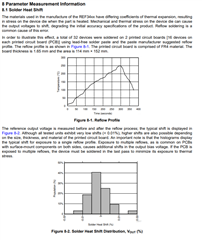Tool/software:
I am working on a design with the LM4140BCM-2.5 voltage reference and I am having an issue with the accuracy of the reference. The datasheet lists the initial accuracy of V_REF to be +/- 0.1% but with the note that:
(4) High temperature and mechanical stress associated with PCB assembly can have significant impact on the initial accuracy of the
LM4140 and may create significant shifts in VREF.
Is there data or guidance on the accuracy of the reference post PCB assembly? I am currently assuming the accuracy is within +/-0.5% but I’m not sure if that is a reasonable assumption to make. I appreciate an informaiton you can provide.
Thanks,
Zack



